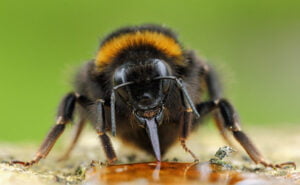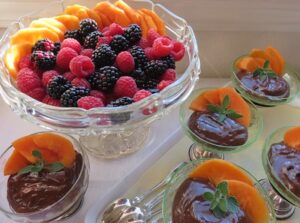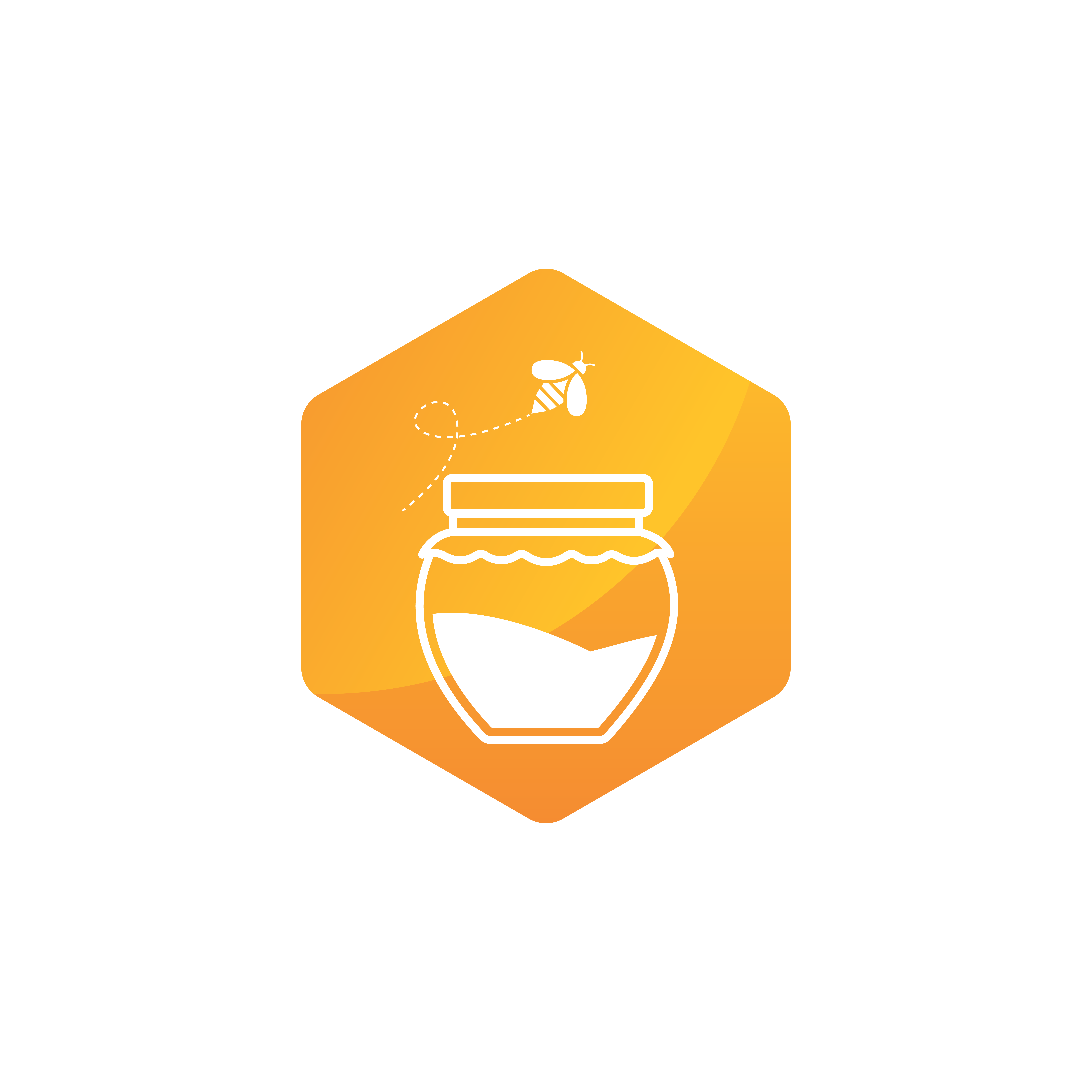Bees play an important role as essential pollinators in our ecosystem, but they can sometimes become unwanted visitors in our outdoor spaces. If you’re looking for ways to keep bees away from yourself, your home, or your swimming pool during the warmer months, there are several natural and effective deterrents you can try. In this article, we will explore the best ways to keep bees away using techniques such as using natural bee repellents, creating a bee-free environment, and seeking professional help when needed.

Just for a second. Imagine you are a bee. You are thirsty and hungry, been flying around all day, pollinating and collecting nectar. Where would you like to stop and eat and drink?
As soon as thirsty bees see water, they want to drink.
When they smell some sugar or acid they fly in that direction.
And when they see flowers with those magical colors, bees just have to go there.
You will learn 15 best natural ways to keep bees away but first we need to learn how different bees beehave.
Understanding the Types of Bees and Their Behavior
Before we dive into the methods, it’s important to understand the different types of bees that may be causing concern. Some common bees you may encounter include:
Honey Bees: European honey bees are the most common type of honey bee encountered. They are important pollinators and are generally docile unless their hive is disturbed.
Carpenter Bees: These bees are known for their ability to drill holes in wooden structures, such as window frames. They are generally harmless but can be a nuisance. Among bees, their sting is the most painful.
Bumble Bees: Bumble bees are large, fuzzy bees that are also important pollinators. They are generally not aggressive but may sting if provoked.
Ground Bees: Ground bees create nests in the soil and can be aggressive if their nest is disturbed. They are generally harmless if left alone.
While bee stings are not as painful as the sting from yellow jackets, it is still better to avoid them as bee stings have more venom than other insects, and they are more likely to sting.
Anybody with bee allergy should carry with him an EpiPen or Auvi-Q.
Yellow Jackets: Predatory social wasps also called yellowjackets. Fast motions and running away aggravate them, so slowly leave the specific area.
15 Best ways to keep bees away
The most important step is to create an environment that is less attractive to bees.
The best thing is to remove food sources that attract bees. Let’s look more into this.
1. Remove Sweet Sodas and Sugary Beverages
Bees have a natural preference for sweet substances, which is why they are commonly drawn to sugary beverages like sweet sodas. These drinks often contain high concentrations of sugar, making them irresistible to bees. When enjoying these beverages outdoors, it is common to see bees gathering around open containers or spilled sugary drinks. A good idea is to keep sugar water in closed containers and to throw empty soda cans in garbage bins.

2. Put Away Fruits and Fruit Residues
Fruits are a natural food source for bees due to their high sugar content. When we consume fruits outdoors or discard fruit residues, such as peels or cores, bees are quick to find these remnants. They are especially attracted to overripe or decaying fruits, which produce a stronger scent and have a higher sugar concentration like fruit juice. Throw any fruit residues into trash cans with the lid closed.
3. Serve Sweet Foods like Pastries and Desserts only for a short time
Bees are opportunistic foragers and will exploit any available food sources. Sweet pastries and desserts like cakes, cookies, and pies are often made with ingredients like sugar, honey, or fruit preserves that appeal to bees. When enjoying these treats outdoors, it is not uncommon to have bees buzzing around in search of a sugary snack. Keeping bees away from the sweet smells in your picnic area by closing pastries and desserts in their containers and cleaning any crumbs off the plates and tables.
4. Clean Any Spilled Syrups and Honey
Sticky substances like syrups and honey are irresistible to bees as it resembles sugary nectar. If spills occur while cooking or eating outdoors, bees will flock to these areas to collect the sweet residue. It’s important to clean up any spills promptly to avoid attracting more bees and to prevent them from becoming a nuisance.
5. Use Sparingly Barbecue Sauces and Marinades
Barbecue sauces and marinades, particularly those with a sweet or fruity flavor profile, can also attract bees. These sauces often contain sugar, honey, or fruit juices, making them appealing to bees searching for a sugary meal. When hosting outdoor barbecues or picnics in late summer, it’s essential to keep food covered to minimize bee interactions.

Dessert with Agave Syrup (Chez Simone, flickr.com)
Why Bees Are Attracted to Human-Based Food Sources
Sugar as an Energy Source
Bees rely on sugar as their primary energy source. Natural food sources like nectar and pollen from flowers provide bees with the necessary nutrients, including carbohydrates in the form of sugars. Human-based food sources that are high in sugar mimic the sweetness of nectar, making them attractive to bees.
Scent and Aroma
Many human-based food sources, such as sweet sodas, fruits, and desserts, emit strong scents and aromas. Bees have a highly developed sense of smell and are drawn to these fragrances. They use scent as a cue to locate potential food sources, and the enticing aromas of human food can lead them to investigate further.
Opportunistic Foraging
Bees are opportunistic foragers, meaning they will explore various food sources to meet their nutritional needs. While their primary focus is on natural plant-based food, they will take advantage of human-based food sources when available. These alternative food sources can provide bees with a quick and accessible energy boost.
6. Use Bee Guards and Nectar Guards
If you have hummingbird feeders or nectar feeders, then your best option is to use bee guards or nectar guards.
7. Create a barrier for insects
Nectar guards are small plastic or rubber devices that are placed around the feeding ports of hummingbird feeders. They consist of flexible, elongated tubes with small slits or holes near the tip. These slits or holes allow the hummingbird’s beak to access the nectar, but they act as a barrier for insects, preventing them from inserting their proboscis into the feeder.
8. Reduce spillage and waste
Nectar guards also help minimize nectar spillage and waste by keeping the unpleasant odor away. When insects attempt to access the nectar, they often cause the feeder to sway or spill, leading to unnecessary loss of nectar. By using nectar guards, you can significantly reduce spillage and ensure that the nectar remains accessible to hummingbirds.
9. Don’t Choose Floral Patterns and Bright Colors
Bees are naturally attracted to floral patterns, floral prints, and bright colours, as they resemble flowers. If you want to minimize bee attention, consider using patterns and colors that are less likely to attract them.
10. Eliminate Standing Water Sources
Bees, like other insects, need sources of water. Remove or cover any standing water sources, such as bird baths or open containers, to discourage bees from lingering in your outdoor space.
Any water source around you is an opportunity for any type of bee or wasp to come and drink. So make sure to use lids even on small objects with water inside.
11. Plant Bee-Repelling Herbs and Flowers
Peppermint plants, bee balm, and marigolds are long known to be used as herbal bee repellent. Consider planting these in your garden or near outdoor activity areas to create a natural barrier.
You can also use essential oils as active ingredients such as peppermint oil, which can act as bee repellent. The strong scent of peppermint oil masks the scent of flowers, which bees are attracted to.
To make a natural bee-repellent spray, mix 20 drops of peppermint oil with 1 cup of water in a spray bottle.
Apply the spray to areas where bees are a problem, such as around windows and doors, on decks and patios, around your eating area, around your picnic blanket, and in gardens.
12. Use Cucumber Peels
Bees are also known to dislike the scent of cucumber. A great way to keep bees away is to place cucumber peels in areas where bees are a problem as this will deter them.
Simply cut up a cucumber and place the peels in bowls or on windowsills. The smell of the cucumber will help to keep bees away.
13. Use Organic Baby Powder, Baby Oil or Dryer Sheets
Bees are sensitive to strong scents, including the smell of humans. Sprinkling organic baby powder or placing dryer sheets in areas where bees are common may help keep them away. The powder or sheets will help to mask your scent, making it less likely that bees will be attracted to you.

14. Attract Bees with Bee Baits in Small Areas Far From You
If you have a bee problem, creating a bee bait away from your living spaces can help redirect them. Mix equal parts of water, sugar, and maple syrup and place it in a saucer feeder or shallow dish away from high-traffic areas. The bees will be attracted to the bait and will hopefully stay away from your new home or business. The good news is that you can plant flowering plants and a bird bath as far away as possible and this will keep bees away.
15. Professional Help
If you have a persistent bee problem or suspect a bee hive or wasp nest on your property, you should try wasp repellents and bug repellents. If this does not help, then it’s best to seek professional help from a bee removal specialist or local beekeepers. They have the expertise and equipment to safely relocate the bees and minimize any potential harm.
Important Things to Remember
While it’s important to keep bees away from areas where they may pose a risk, it’s crucial to remember that bees are essential pollinators and play a vital role in our ecosystem. Whenever possible, try to coexist with bees and use natural ways to provide them with alternative food sources, such as nectar-rich flowers away from high-traffic areas.
In conclusion, by implementing these natural methods and creating a bee-free environment, you can enjoy outdoor activities and swimming pool time without the presence of unwanted bees. Remember, maintaining a safe distance and respecting bees’ personal space is the best way to ensure harmony between humans and these important pollinators.
